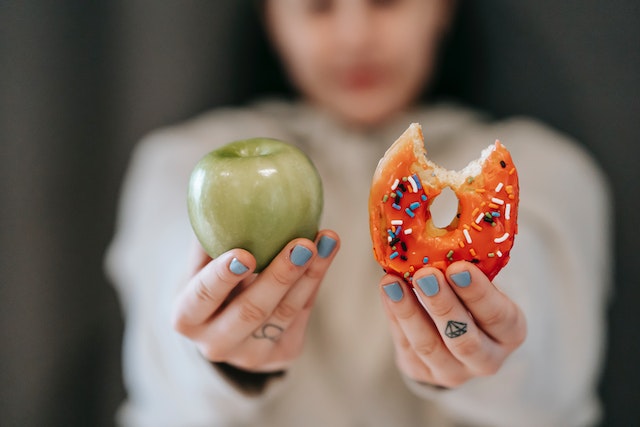How Long Does a Weight Loss Plateau Last? Let’s Solve It!
When you embark on a weight loss journey, you start with a mix of excitement and determination. But as you progress, the unexpected weight loss plateau can halt your momentum, making you ask, “Did I make a mistake?” or “Is my journey over?” These plateaus challenge many, but understanding them can reignite your motivation. So, how long does a weight loss plateau last?
By exploring how metabolic rate affects weight loss, considering the impact of caloric intake, and differentiating between muscle mass and fat, you gain the knowledge to navigate these pauses confidently and effectively. Read on to find out.
What Is a Weight Loss Plateau?
A weight loss plateau occurs when weight reduction stalls despite ongoing diet and exercise efforts. It usually happens after the initial success of consistent weight loss. This state arises if one’s caloric intake matches the energy they burn, even with consistent dietary and physical efforts. This also means the body’s metabolic rate has adjusted to the decreased weight. As a result, one may find the need to recalibrate their weight loss plan to ignite further progress.

Weight Loss Plateaus Explained
Starting a weight loss journey is a commendable step. Yet, most individuals encounter a plateau phase at some point. Understanding the factors that contribute to this plateau can empower you to make effective adjustments. Here’s a section about weight loss plateaus explained:
- Metabolic rate decline. As you lose weight, your body requires fewer calories to maintain its new weight. This reduced metabolic rate can impede further weight loss.
- Caloric intake. Over time, some might unknowingly increase their calorie consumption, negating the caloric deficit essential for weight loss.
- Loss of muscle mass. Muscle burns more calories than fat. If you’re losing muscle, it can slow down your metabolic rate, impacting your weight loss efforts.
- Repetitive type of exercises. Repeating the same exercises can lead your body to adapt, reducing the number of calories burned during workouts.
- Consumption of hidden calories. Beverages, sauces, and dressings can contain hidden calories that add up. This can significantly impact your weight loss plan.
- Decreased physical activity levels. Decreasing daily physical activities, even outside of exercise routines, can contribute to a plateau.

How Long Does a Weight Loss Plateau Last?
Typically, weight loss plateaus last between eight to twelve weeks. It’s important to note that the duration varies among individuals due to factors like body type and underlying causes.So, how long does a plateau in weight loss last? Typically, weight loss plateaus last between eight to twelve weeks. It’s important to note that the duration varies among individuals due to factors like body type and underlying causes.
When an individual encounters a weight loss plateau, their weight remains stagnant despite following a diet and exercise regimen. Research indicates that weight loss plateaus typically occur after about six months of adhering to a low-calorie diet.
So, what signs indicate a weight loss plateau?
- Stalled weight loss. Your scale shows little to no change in weight despite ongoing efforts.
- No change in body measurements. Your body measurements, like waist and hips, remain the same.
- Clothing size remains the same. Your clothing size doesn’t decrease.
- No visible fat loss. You won’t notice a decrease in body fat or improved muscle tone, making your physique appear unchanged.
- Reduced energy. You may feel more tired and less energetic than usual. Fatigue can affect not only your workouts but also your daily life. This might make it harder for you to stay active and engaged in various activities.
These physical signs can indicate a weight loss plateau and may necessitate adjustments to your approach for continued progress.

Strategies To Overcome a Weight Loss Plateau
Starting a weight loss journey is an exciting pursuit for better health. Yet, hitting plateaus can be frustrating. Don’t worry; let’s explore strategies to overcome these plateaus and get back on track to a healthier you.
Diet and Nutrition Recommendations
In your quest for a healthier and slimmer you, understanding the role of diet and nutrition is crucial. This section will guide you through strategic dietary choices that can help you break through weight loss plateaus and reignite your progress. From meal planning to mindful snacking, we’ll explore key nutrition recommendations that can significantly impact your weight loss journey.
1. Strategize Meal Planning
Effective meal planning is your secret weapon in the battle against weight loss plateaus. By carefully orchestrating your daily meals, you ensure you consume fewer calories than you burn. This caloric deficit is the foundation of successful weight loss. To achieve this:
- Begin by setting clear meal goals. Determine your daily caloric target, macronutrient ratios, and portion sizes.
- Prioritize wholesome, nutrient-dense foods. Opt for natural, unprocessed foods rich in vitamins, minerals, and essential nutrients. These foods nourish your body and keep you full, reducing the temptation to overeat.
- Consider meal prepping. Preparing your meals in advance can help you maintain portion control and make healthier choices. Having healthy options readily available reduces the likelihood of succumbing to unhealthy, convenience foods.
2. Maintain regular meal patterns
Consistency in meal timing can be a game-changer in your weight loss journey. When you eat at regular intervals, you help regulate your metabolism and prevent energy imbalances that can lead to overeating. Here’s how to do it effectively:
- Set a schedule. Establish fixed meal times and stick to them as closely as possible. This regularity signals to your body when to expect nourishment, preventing erratic energy levels and cravings.
- Include all macronutrients. Ensure your meals consist of a balance of carbohydrates, proteins, and fats. This helps maintain stable blood sugar levels and keeps hunger at bay.
- Don’t skip meals. Skipping meals can disrupt your metabolic rhythm, potentially leading to overeating later in the day. Instead, aim for three balanced meals and healthy snacks if needed.
3. Control Carbohydrate Intake
Carbohydrates play a significant role in your diet, but focusing on complex carbs like whole grains is key. These carbs provide sustained energy, stabilize blood sugar levels, and keep cravings in check:
- Opt for whole grains. Choose whole wheat, brown rice, quinoa, and oats over refined grains. Whole grains are rich in fiber, vitamins, and minerals, offering better nutritional value.
- Moderate portion sizes. Be mindful of portion sizes, even with complex carbohydrates. Balancing your carb intake with proteins and healthy fats ensures better satiety.
4. Ensure Adequate Protein Consumption
Protein is your ally in the battle against weight loss plateaus. It aids in muscle preservation, which is crucial for maintaining a healthy metabolism and promoting fat loss:
- Prioritize lean proteins. Opt for lean sources of protein like chicken, turkey, fish, lean beef, tofu, and legumes. These options are lower in saturated fats and provide essential amino acids.
- Divide protein intake. Distribute your protein intake evenly across meals and snacks. This approach supports muscle repair and helps control hunger throughout the day.
5. Boost Fiber Intake
Fiber is a powerful tool in curbing appetite and supporting digestive health. Including ample fiber in your diet can help you feel full and satisfied:
- Incorporate fruits and vegetables. Fresh fruits and vegetables are excellent sources of fiber. Aim to fill half your plate with these nutrient-packed options during meals.
- Choose whole grains. As mentioned earlier, whole grains are not only rich in complex carbs but also fiber. They provide a double benefit for satiety and digestive health.
6. Opt For Wholesome Snacks
Snacking can be a strategic part of your weight loss plan when done mindfully. Nutrient-rich snacks can help stave off hunger without derailing your goals:
- Plan healthy snacks. Pre-select healthy snacks like nuts, Greek yogurt, or sliced veggies to have on hand when hunger strikes between meals.
- Practice mindful snacking. Avoid mindless munching by portioning out your snacks and eating them consciously. This helps prevent overindulgence.
7. Reduce Salt Intake
Excess salt can lead to water retention, masking your weight loss progress. By moderating your salt intake, you can reveal the true results of your efforts:
- Read labels. When available, pay attention to food labels and opt for low-sodium or salt-free alternatives.
- Limit processed foods. Processed foods are often loaded with hidden salt. Minimize your consumption of these items to reduce your sodium intake.
8. Stay hydrated
Water is essential for your metabolism and can play a vital role in controlling your appetite. As a tip, you have to drink water before meals. Consuming a glass of water before each meal can help you feel fuller and may lead to reduced calorie intake. Make it a habit to sip water throughout the day to maintain proper hydration levels. Sometimes, thirst can be mistaken for hunger.
9. Choose coffee or tea over sugary drinks
If you enjoy a caffeine boost, consider opting for coffee or tea instead of sugary beverages. Both coffee and tea contain caffeine, which can temporarily boost metabolism and increase fat burning. Enjoy them without excessive sugar and cream.
Sugary drinks like soda, energy drinks, and certain coffees can contribute unnecessary calories. Choosing lower-calorie alternatives can support your weight loss goals.
10. Keep a food journal
A food journal is a must-do when experiencing a weight loss plateau because it helps you gain insight into your eating habits. It can also help you identify weight loss obstacles that will lead you to make necessary adjustments.

Physical Activity Recommendations
Enhance your fitness routine to overcome weight loss plateaus by working on your physical activities and incorporating essential rest days.
- Increase physical activity. Adding intensity and variety to your exercise routine can give your metabolism the boost it needs to break through the plateau. Here are some effective strategies:
- Cardiovascular exercise. Add running, cycling, or swimming to burn calories and enhance cardiovascular health. Aim for at least 150 minutes weekly.
- Strength training. Build lean muscle mass with resistance exercises, boosting your resting metabolic rate. Train major muscle groups at least twice a week.
- Interval training. Try High-Intensity Interval Training (HIIT) for efficient calorie burning. Short bursts of intense exercise followed by brief rests work wonders.
- Cross-training. Keep workouts interesting and challenge different muscles. Include activities like yoga or martial arts.
- Incorporate rest days. Rest days are vital for recovery, preventing burnout, and reducing injury risk. They maintain long-term consistency in your fitness journey.

Lifestyle and Mindset Recommendations
Adopting a positive lifestyle and mindset is crucial for weight loss and well-being. Remember to:
- Cultivate patience and confidence for long-term weight loss success.
- Manage stress effectively to regulate hormones that influence weight.
- Prioritize quality sleep, as inadequate sleep disrupts appetite and metabolism regulation.
- Avoid starvation, which can slow metabolism and lead to overeating, derailing progress.
Break Weight Loss Plateau With ModernFit!
Are you feeling stuck in your weight loss journey? ModernFit offers valuable resources to help you overcome plateaus, from workout plans to nutritional guidance.
Join us today and access the tools you need to make progress toward your goals!
Frequently Asked Questions About Weight Loss Plateaus
Will a Weight Loss Plateau Go Away on Its Own?
Weight loss plateaus can resolve on their own. However, you have to make intentional changes to your diet and exercise routine to break through them.
How Long Does It Take To Break Weight Loss Plateau?
The time it takes to break a weight loss plateau varies; some may see progress in a few weeks, while others might take several months.
How Do You Break a Plateau in Weight Loss?
To break a plateau in weight loss, consider adjusting your caloric intake, incorporating new exercises, and managing stress levels.
Do Weight Plateaus Go Away?
Weight plateaus can eventually go away with the right strategies and persistence in your weight loss efforts.


